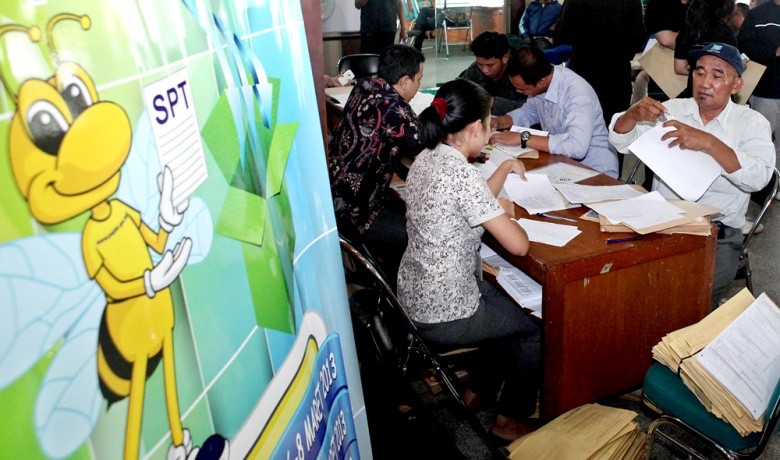Popular Reads
Top Results
Can't find what you're looking for?
View all search resultsPopular Reads
Top Results
Can't find what you're looking for?
View all search resultsBig data mining system needed to detect tax evasion
More data does not necessarily mean better analysis or more informative conclusions.
Change text size
Gift Premium Articles
to Anyone
W
elcome to the world of big data, a world where an estimated 2.5 quintillion bytes of data are being produced every day, a world where 90 percent of global data has been created in the last two years and a world that creates enormous challenges and opportunities for regulators.
The Directorate General of Taxes (DGT) is no exception. It receives and processes more than 10.97 million tax returns a year coupled with millions of data points from government agencies, institutions, associations and other parties – data that is statutorily protected and that offers a vast reserve of information.
This is not to mention data received from financial services institutions and other entities that are required to submit financial information for tax purposes to the DGT as mandated by Law No. 9/2017 on the stipulations of regulation in lieu of Law No. 1/2017 on access to financial information for taxation purposes as a requirement for the automatic exchange of information (AEoI).
In recent years, the DGT has been given increased responsibilities, such as implementing tax reform. Today, developing effective and efficient approaches, algorithms, and frameworks is essential for the DGT to deal with such mammoth amounts of data.
The solution is to work smarter and more efficiently. The DGT has been investing in big data analytics. In addition, the establishment of the Directorate of Tax Data and Information and the Directorate of Information Technology and Communication serves as a key driver for the DGT’s adoption and implementation of big data analytics.
Presently, the DGT has access to unprecedented amounts of data, although its collection and maintenance of data can raise other concerns, such as of security and privacy. The DGT can also mine and utilize data from various public sources, including social media outlets such as Facebook, Twitter and Linkedin, as well as other public internet data from sources such as Google.
What is data mining, actually? Simply put, data mining is the process of extracting information from large sets of data to analyze relationships in that data. Data mining models come in two general forms: predictive and descriptive. Predictive modeling creates a model based on data to make predictions about the system described by the given data set. Meanwhile, descriptive models summarize patterns and properties in a data set and produce new, nontrivial information based on the available data set (David Hand et al. 2001).
Information reporting through AEoI and information-sharing agreements has led to remarkable structural changes in the global exchange of tax-related information. These developments will be further strengthened in the future by initiatives such as the Convention on Mutual Administrative Assistance on Tax Matters (MAC), a collaborative effort by the DGT and several countries to combat the increasingly widespread and diverse practices of tax avoidance and tax evasion. Enforcement in these areas and others is likely to see particular benefits from the DGT’s investment in data analytics, since the tax office has entered the future of fighting tax fraud. It has embraced big data analytics, and we have likely only seen the tip of the iceberg.
In fully embracing big data analytics, the DGT can employ “spiders” – automated computer programs – to review social media sites. The DGT can also cross-reference and use these data sets to run pattern recognition algorithms to identify trends and understand the relationships in data. Additionally, the DGT can employ a number of advanced techniques and tools in this effort, such as anomaly detection and advanced clustering.
These tools can be utilized to improve case selection and coordination among DGT divisions. Developments over the past decade point toward several areas where the DGT’s investment in big data analytics is likely to generate a particularly good return.
International tax enforcement is one such area. For instance, the DGT has obtained unprecedented amounts of data through international tax enforcement efforts, such as the Panama Papers and Offshore Leaks, to name a few. This data has led to the DGT’s use of massive databases. Although it seems that big data makes it possible to find more useful, actionable information, the truth is that more data does not necessarily mean better analysis or more informative conclusions (Mehmed Kantardzic et al. 2020).
Hence, designing and deploying a big data mining system is a pivotal task for the DGT so it can build powerful predictive analysis frameworks. The best results in data mining can be achieved when data-mining experts combine experience with other areas of organizational domain expertise.
Some of the essential steps in data mining include determining the ultimate purpose of mining the data and having a deep grasp of organizational objectives in formulating the goal of a data-mining process. As such, the key to successful data mining is coming up with a thorough formulation of the problem the DGT is trying to solve.
Ultimately, data analytics will help the DGT identify tax reporting anomalies and identify tax evasion on a much larger scale.
***
The writer is a senior official at the Directorate General of Taxes. The views expressed are personal.










